Want to hear a quick story about butter?

It was the spring of 2001, and I was visiting Europe for the first time. On a 10-day trip with students from the German and French classes at my high school, there were much-needed naps taken on tour buses, unexpected bouts of gloomy weather followed by delightful sunbursts through the clouds, workers’ strikes at the Louvre, and holiday hours impeding our tourism at every turn. But I was having the time of my life, starting with breakfast each morning.
The specifics of each spread varied depending on our location on a given day, with salty cold cuts and yogurt on the table in Germany, and chocolate croissants in France. But the butter was always the same – golden, delicious, and unsalted.
This wasn’t what we had at home. And I couldn’t get enough. What a difference it made! It was meant to be!
I didn’t miss the salt one bit.
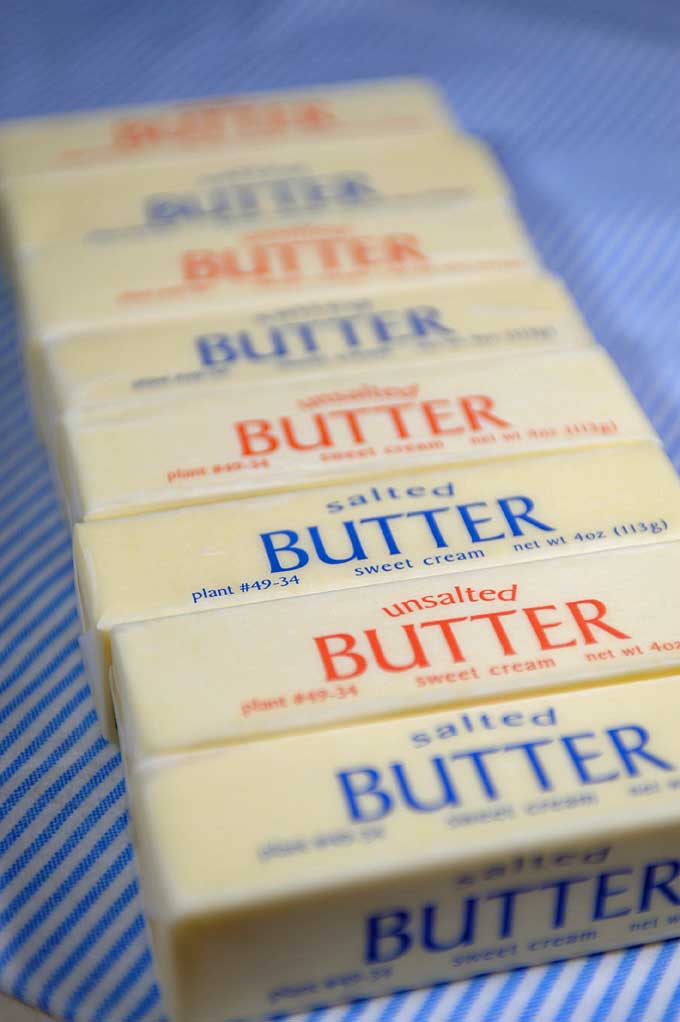
The unsalted type is beloved by bakers and eaters everywhere. Unctuously fatty, with a mild but delicious flavor, it plays an important role in the pastry kitchen.
Butter without salt is what you will often find in commercial and home kitchens alike, if an experienced baker is present.
However, at least until recently, the salted spread was the most common variety found in most home refrigerators.
What does this mean for you and your baking? And what should you do if your recipes don’t offer a clue as to what should be added, simply listing “butter” among the other ingredients, with no further details?
Like butter melted over a low flame and then carefully skimmed (before dunking in a huge chunk of lobster, one would hope!), let’s see what we can do to clarify this situation.
The Champ Is Here: Unsalted vs. Salted
Unsalted is the default choice for many home cooks, and for good reason.
Imagine if you reached for the olive oil to add half a cup or so to a salad dressing or a drizzle into the frying pan, and it was salted – it might be difficult to gauge how much you need, or how to balance it with the other seasonings and flavors of your dish.
The same goes for baking – starting with plain, unsalted butter adds fat and flavor without the added savory notes that might throw off the delicate balance of your batter or dough.
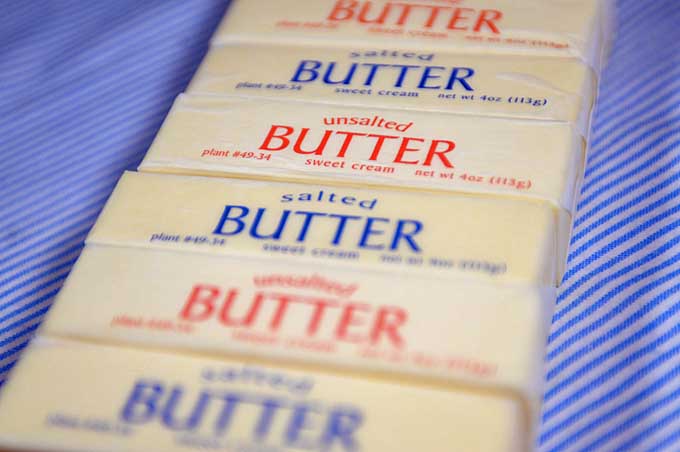
Most recipes will specify what type is required, especially if you’re making something sweet for breakfast or dessert. But alas, this isn’t always the case.
Here’s a simple rule to follow:
When in doubt, reach for the unsalted variety. You can always add salt to your mixing bowl, but it’s harder to remove the savory quality from an over-salted dish.
As an added bonus, unsalted butter burns less easily than its saline counterpart.
Since baked goods are often made with raw eggs, and because no tinkering can be done halfway through as you might when making a stir fry or stew on the stovetop, adding a dash of salt or a little spice here and there to your liking, you’re not going to know if whatever you’re baking has been over-salted until you’re sitting down at the table.
And nobody wants that!
A One-Minute Science Lesson
Salt plays an important role in the science of baking.
It helps to control the fermentation rate of yeast, slowing down the chemical reaction in play, which would go unchecked if given enough sugar untempered by sodium.
Salt also helps to strengthen the gluten strands that are forming as you knead your dough, making a satisfying, tight crumb in homemade breads rather than giant air pockets that let your PB and J seep through onto your hands, and your lap, and the floor.
And finally, a pinch of salt added to a recipe serves to accentuate sweet flavors. That batch of chocolate chip cookies just wouldn’t be the same without a dash of salt added to the batter. And this doesn’t help to boost the taste of sugar alone – other sweet(ish) flavors like almond, vanilla, and even lemon all really stand out when paired with a touch salt.
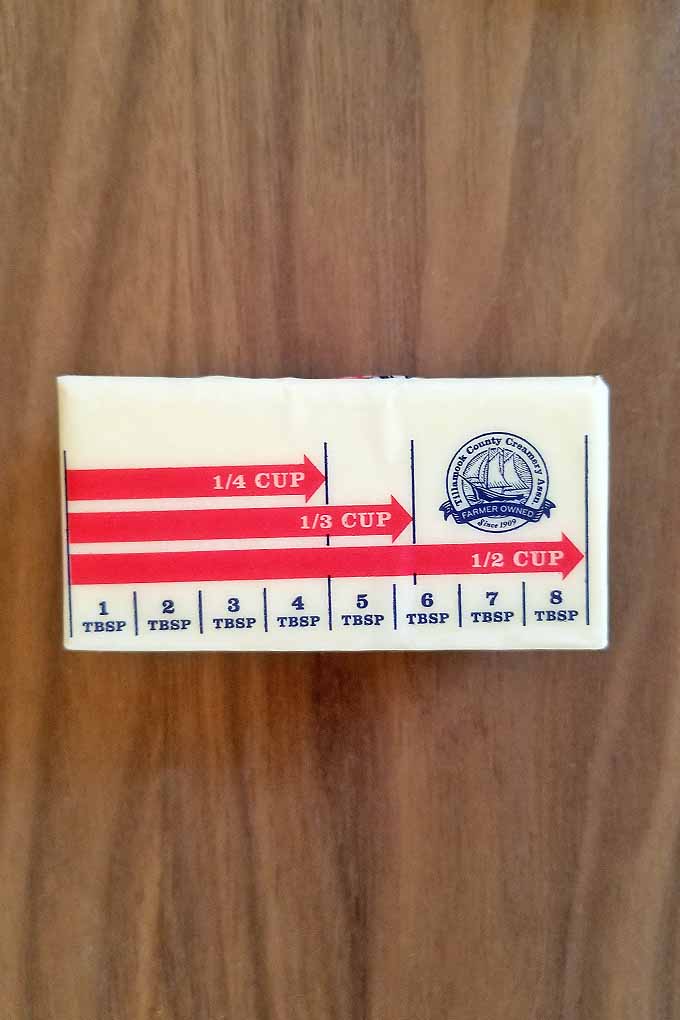
Keep in mind, that added salt isn’t just about flavor. Salt also acts as a preservative, giving butter a longer shelf life, a boon to dairy purveyors everywhere. And it helps to cut down on bitter flavors as well. But this isn’t a significant benefit to home bakers – fresher butter is always best when it comes to baking.
If your recipe just calls for “butter,” grab an unsalted stick. If you prefer the salted type for spreading on toast and other everyday uses, reserve a pound or so of the other variety in the freezer for when the baking bug comes to call. You never know when you might need it!
Just remember to defrost that butter before you add it to your recipe. Most ingredients should be room temperature for baking, unless your recipe indicates otherwise. Allow it to sit on the counter until it’s room temperature, or soften in the microwave on a low heat setting, being careful not to let it melt.
If you don’t have any of the unsalted variety on hand, you may be able to adjust your recipe to make it work. Just ratchet down the quantity of salt that you add accordingly. Though the specifics of salt content (as well as fat and water levels) vary by brand, a standard US stick (1/2 cup) generally contains about ¼ teaspoon of salt.
A Note on “Sweet Cream”
You might see “sweet” or “sweet cream” butter on shelves in the US and the UK, and this can be confusing. One would assume that use of the word “sweet” here denotes that the product has not been salted. But this is not always the case.
“Sweet cream” can in fact refer to a product that has salt added, so you’re going to have to read the label closely. Odds are, some of you are going to read this and realize you’ve in fact been adding salted butter to your baked goods for years… whoops!
Julia Child makes a note of this in her famous cookbook, Mastering the Art of French Cooking, first published in 1961. On the topic of butter, she states, “Except for cake frostings and certain desserts for which we have specified unsalted butter, American salted butter and French butter [meaning the cultured, unsalted variety] are interchangeable in cooking. (Note: It has recently become a habit in America to call unsalted butter, “sweet butter”; there is an attractive ring to it. But technically any butter, salted or not, which is made from sweet, unmatured cream is sweet butter.)”
It’s heartening to note that an extra quarter teaspoon or so of salt here or there wasn’t going to discourage Julia!
For more wonderful cooking and baking tips from Julia Child herself, you absolutely must check out this book if you haven’t already. It’s available on Amazon. My copy was a gift from my husband several years ago, and it’s one of the most prized possessions on my cookbook shelf. Er, let’s be honest – shelves.
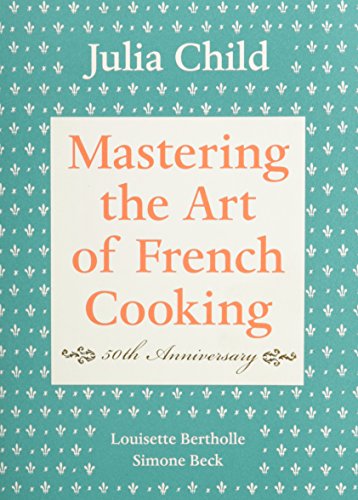
Mastering the Art of French Cooking, Vol. 1
In fact, most of the butter sold in the US is salted. According to an article by Florence Fabricant in the New York Times from March of 1995, about two-thirds of it was made with salt at that time.
It’s not clear how the sales totals have changed since then, but this number from a few decades ago is important – many Americans were shifting from margarine and other spreads back to the real thing, eating more of it than they had since the 1970s. The market changed too. Supply and demand, after all.
What “sweet” really means here is that it was made with fresh cream, rather than a cultured or soured variety common to parts of Europe outside the UK – and what was made in the US before the arrival of pasteurization and refrigeration in the nineteenth century. With or without salt, it can still be “sweet.”
Oh, and if your spread of choice is made with unpasteurized cream? That’s raw cream butter, and it has the shortest shelf life of all. You can keep it in the fridge for 10 days or so. This is relatively rare, often available only in farmers markets or on dairy farms, where DIY artisans may make their own regularly since they have a ready supply of milk on hand.
Speaking of rarity, this also explains why unsalted butter became so popular across Europe. It was discovered early on that salting helped to preserve it, and this was commonly done. In fact, according to Larousse Gastronomique: The World’s Greatest Culinary Encyclopedia (an excellent resource for all things food, available on Amazon), local sale of surplus had become widespread by the Middle Ages in France, where it was often wrapped in leaves and stored in large clay pots, covered in salt water.
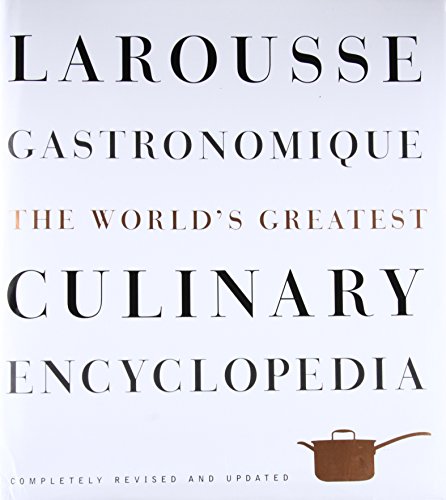
Love compound butter? You’ll find 20+ recipes for it in Larousse Gastronomique.
According to John Burgess at Quora, only those who were well-off enough to have extra milk to make their own butter each morning in the UK left it unsalted.
And talk about conspicuous consumption – this habit eventually trickled down to the masses, and just about everyone came to covet the taste of the unsalted spread favored by the well-to-do.
It took awhile, but this marker of class eventually jumped the pond, reaching the US. By the end of the last century, aspirational foodies without any baking experience were claiming the unsalted variety was the best thing ever, singing its praises, clamoring for it.
So, yes: it’s about flavor, it’s about shelf life, and it’s also apparently about eschewing the need for a long-lasting product while grasping hopefully for a touch of class.
If you’re making a recipe that calls for no salt whatsoever, such as a buttercream frosting, it’s best to avoid the salted version entirely. If you’re in a pinch, extra sugar may help a bit to balance out those salty flavors. Or better yet, play up the saltiness by turning that vanilla icing into salted caramel instead, rich dark chocolate, or another flavor that benefits from having a touch of salt added.
Packaging Preferences
Some clues can also be provided by the waxy paper on those sticks. Since the early 1900s, most commercially manufactured butter has been packaged the same way – in longer, narrower rectangular sticks on the East Coast and somewhat stockier blocks on the West Coast. Though they are shaped differently, they’re equal in volume.
In addition to the word “Butter” printed prominently on the wrapper, and the helpful measurement markings, there’s something else that you may not have noticed:
Those paper wrappers are color coded.
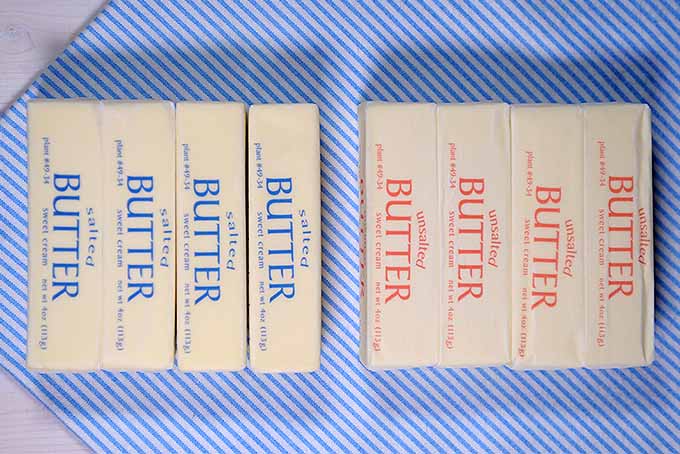
Yup, that’s right. Way back when, somebody decided to print salted butter labels in blue ink, and unsalted labels in red. And it stuck. Though there are some exceptions, that’s what you’ll find most commonly today, in the US at least.
This has been the cause of some consternation online. Many Redditers and others have noted that although the actual sticks inside the boxes that they purchased followed these labeling codes, the labels on the outer boxes swapped colors (or sometimes, vice versa) – with butter, for example, in a red labeled box indicating that it was unsalted, with blue writing on the wrappers on the sticks inside.
Some commenters on the message boards have hazarded a guess that the dairies wrap the sticks and the stores design the outer packaging, which may at least get to the root cause of these discrepancies. But it doesn’t explain the the logic (if there is any) behind these choices.
As for the unsalted Tillamook sticks in my freezer right now? The wrapper is red and blue! Can’t speak for the box though, since I already threw it away.
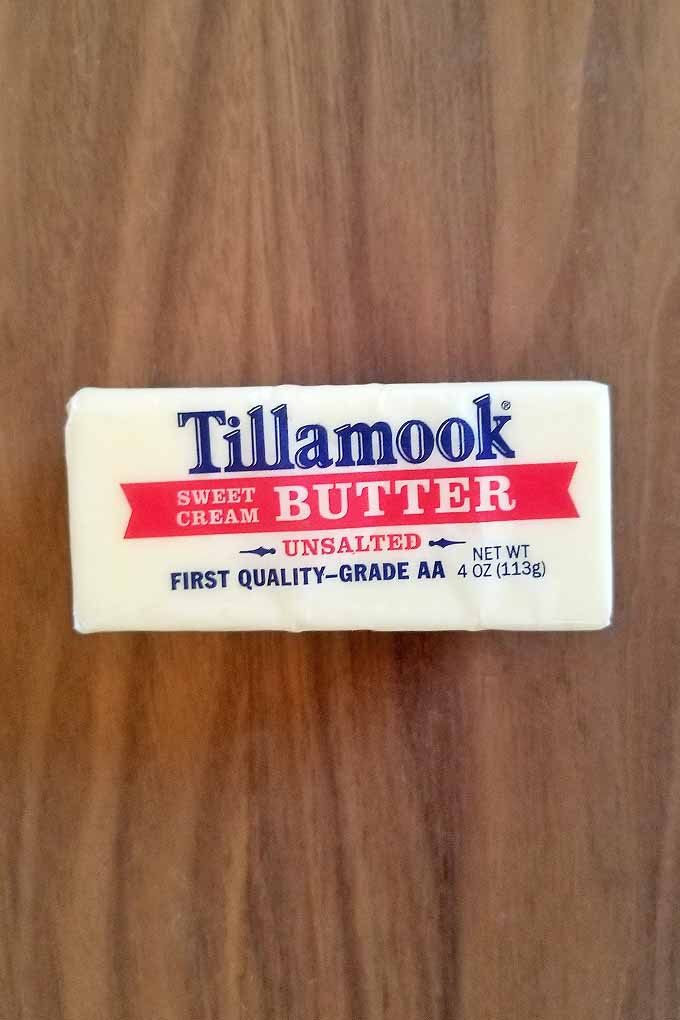
Challenge brand changes things up again, offering unsalted sticks with blue labeling on the outer box, and foil wrappers printed mostly in blue, with a red buck at the center, and text denoting that this product is “Unsalted (Sweet).”
Several brands, now and in the past, have combined blue and red writing on their inner waxed paper or foil labels.
I really tried to get to the bottom of this red and blue color code and its origins, but I came up mostly empty handed. I did find a fascinating treatise from the late 1940s on the history of butter packaging (cha-ching!) but was disappointed to discover that although it did detail the ins and outs of the waxed paper wrappers and waxed chipboard boxes, there was no mention of the color-coded labeling of salted versus unsalted product.
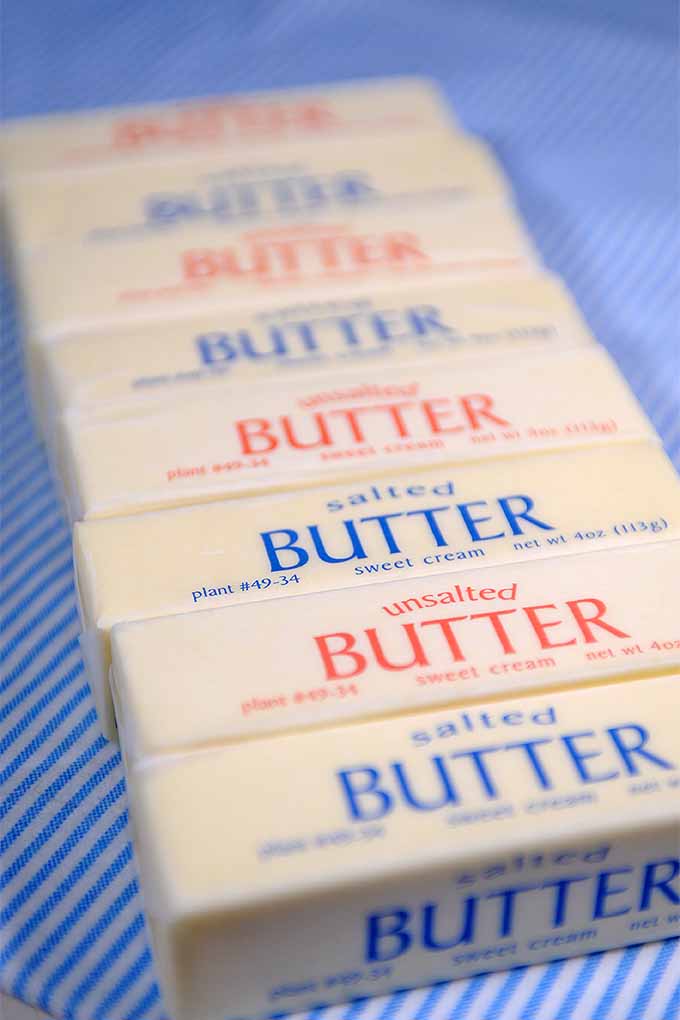
Walter Lowenfels, whose older brother Albert patented a new prism-shaped package in the early 1930s, was a poet who left for Europe to escape his family and their butter business in the late ‘20s. He returned in 1934 at the advent of World War II to rejoin his family in New Jersey, and his job at Hotel Bar Butter.
He invented a new type of waxed paper packaging, filed an application for the patent in the summer of 1935, and added a date stamp. But his brother Albert must have submitted the application, and he is officially named as its inventor.
Writing to his friend and renowned author Henry Miller, Walter said, “I butter from nine to five and then I change into a butterfly and go ahead with poems.” By 1938 he had left the business again, for good this time, and moved to Philadelphia to focus his efforts on civil rights and the communist movement as an activist and editor.
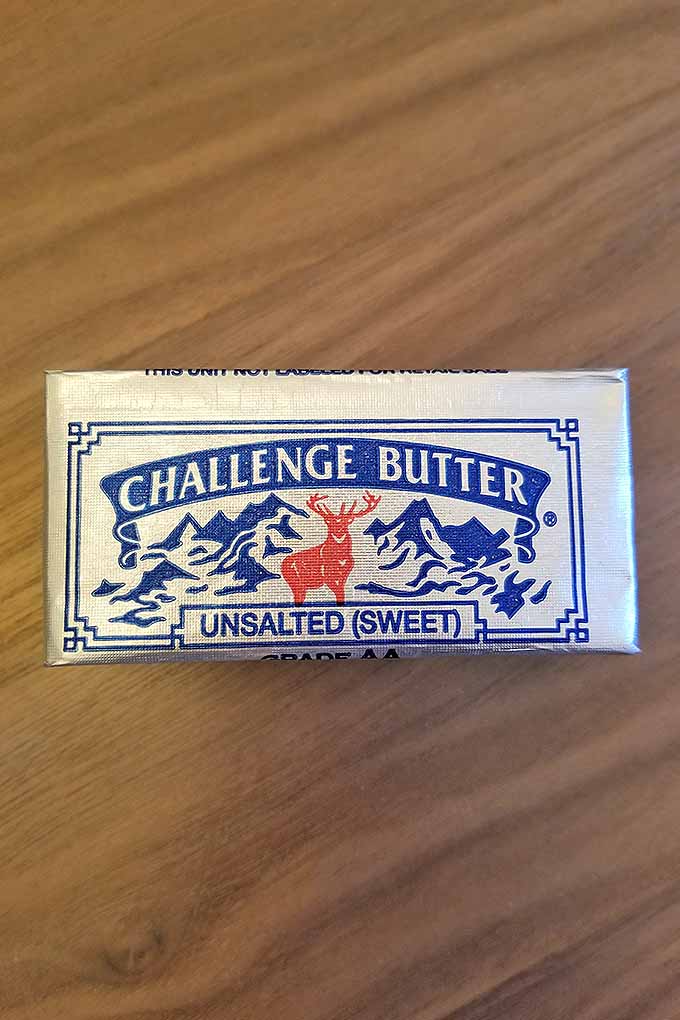
Could it be that Walter had invented the color code used today? Possibly? He did vouch for anonymity in publishing to avoid competition, so chances are, he wouldn’t have taken credit as the originator of this system, even if he had come up with it…
Or maybe it was his brother? We do know that Albert was innovative, as one of the first to sell 4-ounce sticks rather than tubs (others claim Swift and Company, a butter supplier in Hutchinson, Kansas, was the first to receive a request for ¼-pound sticks rather than the standard 1-pound packaging, though the exact timeline on this is unclear.)
We also know that Albert was all about color, and he’s documented defending margarine’s right to be made yellow in the late 1940s. Both modern and historic packaging of Hotel Bar Butter can be found online with combination red and blue packaging, but no indication of what’s printed on the wrappers inside. But, I digress.
Fortunately I was able to get in touch with an expert, and she offered her insights.
Elaine Khosrova, author of Butter: A Rich History, offered some thoughts on the wrapper color question: “In industrial butter production, where you find these kinds of wrapper, it’s always been important that these two different types of butter could be identified immediately by employees in a dairy factory who would be boxing and stocking them for storage or delivery. Back in the early post-war period, when industrial butter production really expanded, employers couldn’t assume that working-class staff were literate, so color coding was key.”

Elaine also added, “I think the color coding was also presumed to be a convenience to some homemakers, who, likewise may not have been able to easily read the label. And even for those who could read, color coding makes it easier to grab the one you want from the fridge… Perhaps what’s important is distinguishing the two in production with different colors, not necessarily which one is red and which one is blue.”
For more insights on the wonderful world of butter from antiquity through to modern times, I encourage you to read Elaine’s book, available on Amazon.
So, take this with a grain of… well, you know. It’s not a foolproof system by any means! Talk about confusing package design…
A Matter of Diet
It goes without saying that many Americans are used to a diet that’s high in salt. And many of our parents, grandparents, aunts, and uncles have been baking with salted butter for years, regardless of what a given recipe calls for. If this is what you’re used to, family favorites may taste a bit off, or even a little bland without the salt.
Health-wise, this shift is a net positive – it wouldn’t be a bad thing for most of us to cut down on our salt intake. Others may actually love the novel shift in flavor that a good smear of unsalted European butter offers when they switch from the salted variety that they’re used to.
For me, it was a trip to Europe back in the ninth grade that served as my awakening to the brave new world that was unsalted butter. I was no stranger to a good croissant, but we typically had the salted type on hand at home, or sticks of Imperial margarine.
The smear of yellow goodness on my breakfast bread on each morning of that trip was sweet, light, and something entirely new – I didn’t miss the salt one bit, and craved the unsalted variety for weeks after my return home. This shift in my tastes also brought about a shift in my baking, and unsalted is what I buy to this day.
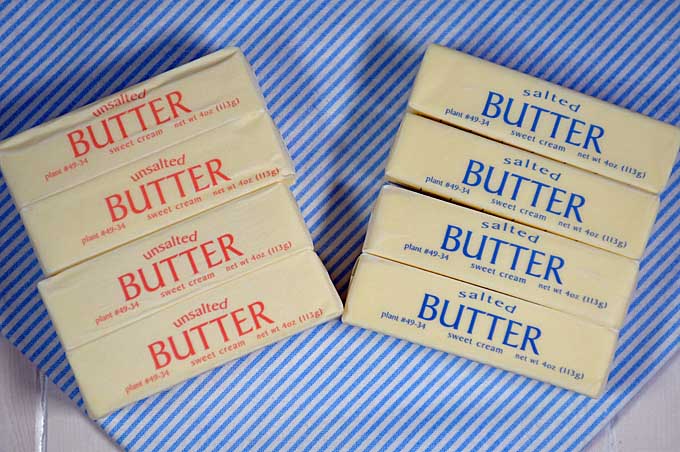
There are other differences in European butter, including a lower percentage of water, higher fat content, and often added cultures. These can of course also contribute to flavor and mouthfeel, and you can find more information about the many other types available in our article here.
If you’re on board with making the shift in full, it’s easy enough to change things up for flavor’s sake once in awhile. I recommend making homemade compound butter with high-quality salt, fresh herbs, and other flavorings like garlic and citrus to keep on hand for topping crusty rolls and homemade bread. Just soften, blend with your chosen flavorings, chill in log form tightly wrapped in plastic, and defrost as needed, when something more savory is called for.
Where do you stand on the salted versus unsalted debate? We’d love to hear from you! Just leave a comment below. Oh, and don’t forget that unsalted butter is the key to a flaky pate brisee pie crust, or a beautiful batch of brioche.
Don’t forget to Pin It!

Photos by Mike Quinn and Allison Sidhu, © Foodal / Ask the Experts, LLC. ALL RIGHTS RESERVED. See our TOS for more details. Product images via Alfred A. Knopf, Clarkson Potter, and Algonquin Books.
About Allison Sidhu
Allison M. Sidhu is a culinary enthusiast from southeastern Pennsylvania who has returned to Philly after a seven-year sojourn to sunny LA. She loves exploring the local restaurant and bar scene with her best buds. She holds a BA in English literature from Swarthmore College and an MA in gastronomy from Boston University. When she’s not in the kitchen whipping up something tasty (or listening to the latest food podcasts while she does the dishes!) you’ll probably find Allison tapping away at her keyboard, chilling in the garden, curled up with a good book (or ready to dominate with controller in hand in front of the latest video game) on the couch, or devouring a dollar dog and crab fries at the Phillies game.


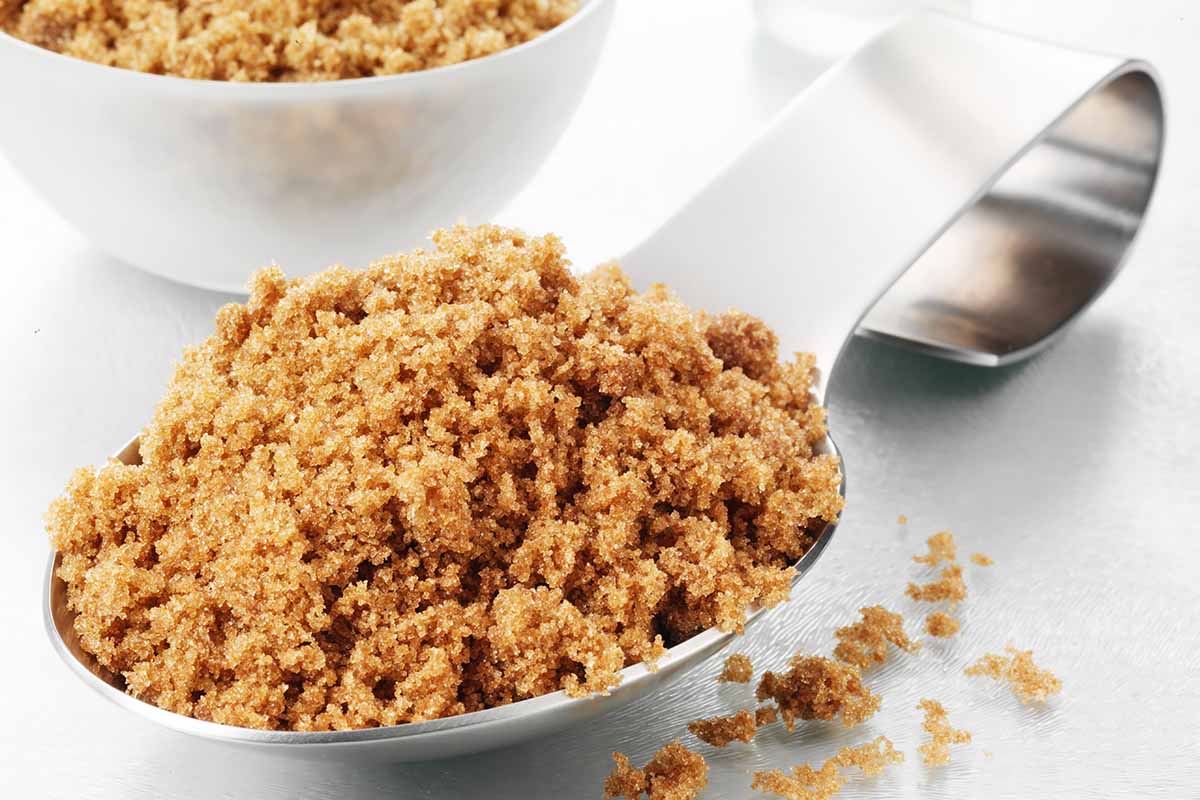
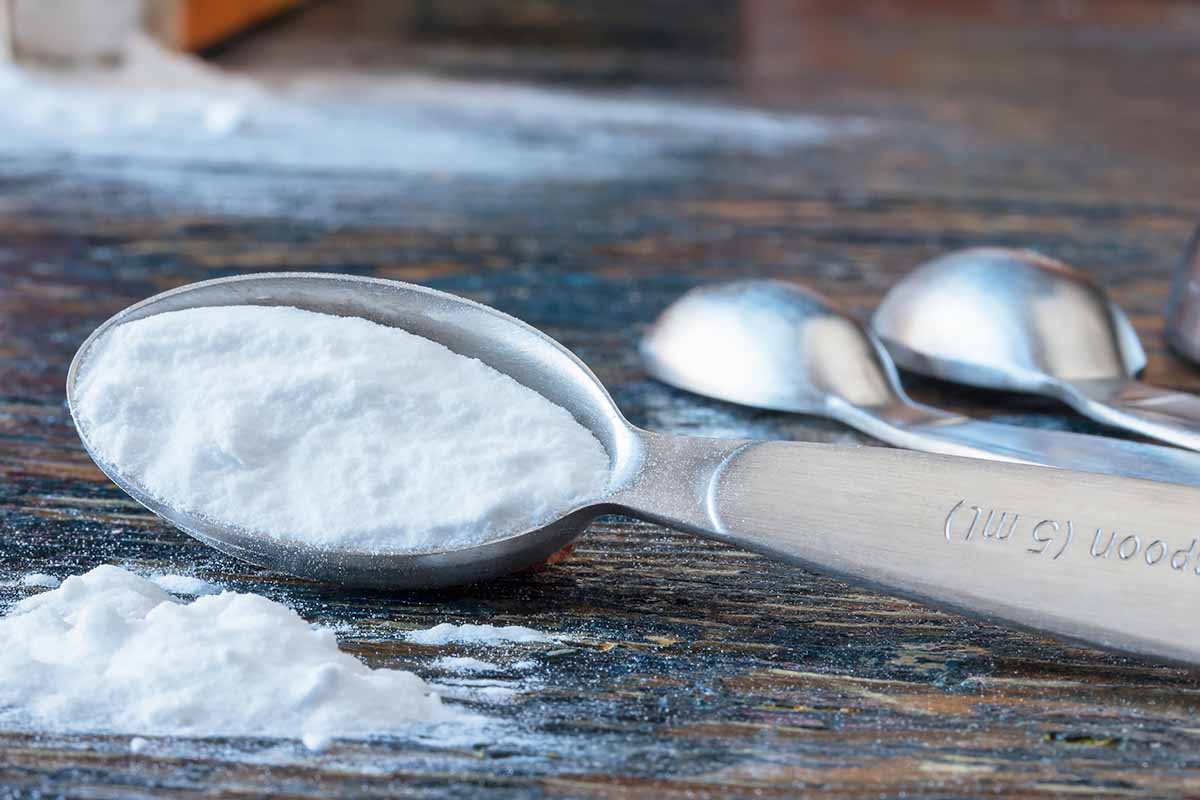
I appreciate your devotion to this subject and the research you did to figure out the red/blue story.
I always buy unsalted butter so that I can use it in any recipe.
My go-to lemon curd recipe in “Chez Panisse Desserts” has a very annoying blend of salted and unsalted butter: 3 Tbsp of each. Why not 6 Tbsp unsalted plus a certain amount of butter? Sure, you can tweak the salt, but it’s not so easy in a lemon curd. (I’m surprised the editor let this through.)
If you have Netflix or another way to watch “Mind of a Chef,” check out the episode called “La Joie de Vivre” during their focus on Los Angeles chef Ludo Lefebvre, season 5, episode 5. Starting at 13:00, Ludo visits a renowned butter producer in Brittany to see how they make their famous butter. It’s enchanting!
A salted vs. unsalted butter mystery that you may have run across in your research: my mother was making a nut brittle and the batches made with unsalted butter was much more likely to separate than the salted butter. Any idea why unsalted might lead to separate, leaving a slick of oil on top of the brittle?
Thanks so much for your message, Marc. Looks like the editor let this one slip through in this case because the editor was also the writer. 😉 Whoops!
Since the blend of salted and unsalted butter tends to be a rarity (and because I agree with you- directions like these are certainly not the most efficient) I failed to include it in the article. But, to address it now: because the amount of salt called for in a lemon curd is so small, and because a restaurant like Chez Panisse probably orders their butter from the same purveyor each week, it’s easier for them to rely on the salt content of a given butter to be consistent. But what might be a shortcut for the professional chef could actually spell disaster for the home cook, since we know salt content between different brands can vary! As you said, indicating the addition of the two ingredients separately with a specific measurement for the salt would be the most accurate. Our own lemon curd recipe on Foodal calls for 4 tablespoons of the unsalted variety, and 1/4 teaspoon of salt.
Mind of a Chef is absolutely fantastic! I am also in love with The Great British Bake-Off – do you watch that program as well? It’s delightful.
As for your nut brittle mystery- since the salt does act as a preservative, it melts (and burns…) at a slightly different rate. This could account for the separation that your mother has experienced. Age of the butter and temperature at which it was added to the recipe might also cause some changes in candy making.
Happy baking!
I use Salted Butter all the time.
Such A Great Blog. Thank U For Sharing Useful Information About how much salt is in salted-butter.
This Article’s Really Amazing And So Helpful For Me. Keep It Up. Thanks.